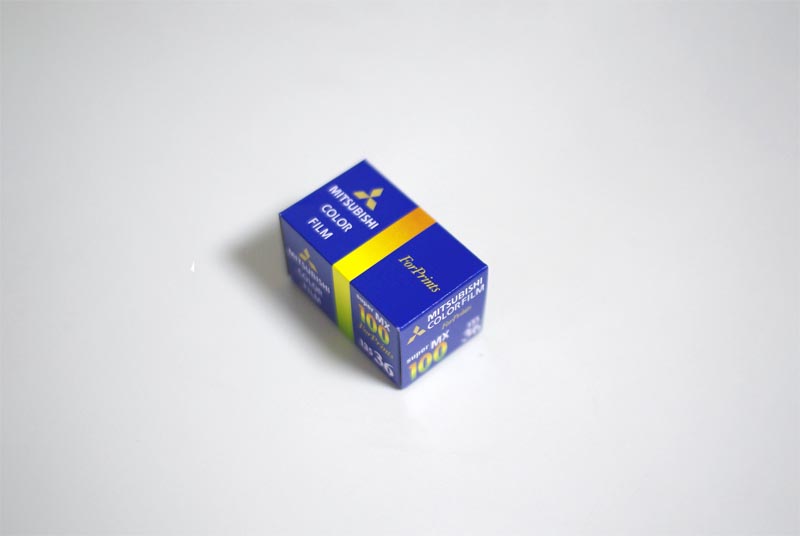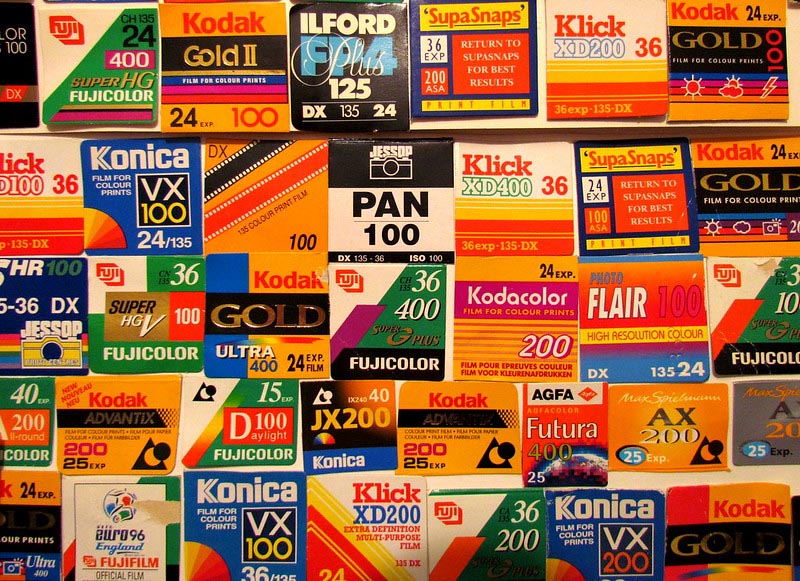Ilford PanF Plus 50: The best black and white film for sunny days?
Last Updated on February 14, 2023
Vivid images, excellent shades of gray, but not quite grain-free enough to be mistaken for Ilford Delta or Kodak T-Max.
In comparison to Ferrania P30 Alpha film, which is known for its prominent black tones when exposed at 50 ASA, the PanF Plus may be a better fit for those who prefer a lighter tone. If Luke Skywalker had a choice between the two films, he would likely choose the PanF Plus.
Airy light instead of melancholy. Where the Ferrania stamps with size 48, the Pan F+ dances on tiptoe.
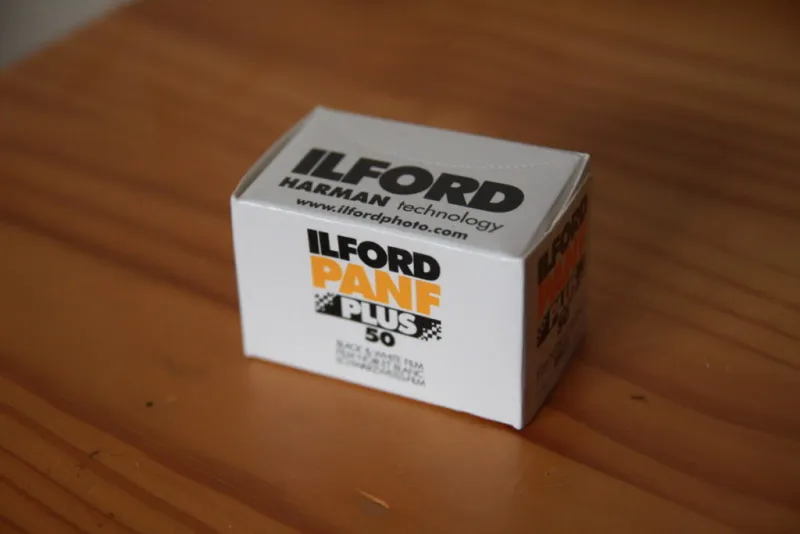
But enough with the questionable comparisons, here are the details of Ilford’s sensitive:
Table of Contents
Key features of the PanF Plus
First of all, the name Ilford PanF+ does not imply the film speed, as is typical with films from other brands.
However, Ilford does not place as much emphasis on this feature in their other films. Film connoisseurs are aware of this aspect and what to expect. For those who are less familiar with Ilford films, I will try to shed some light on this. First, let’s discuss the most important features:
| Name: | Ilford Pan F+ |
| Sensitivity: | 50 ISO / 18° (50ASA, 18DIN) (measured with Ilford’s ID-11 at 20°C) Ilford recommends using the film between ISO 25 and 64 and also gives development times for different developers at these speeds. (EI 64 Microphen only) |
| Availability: | 35mm film in DX coded 36 cartridges or as a roll for self-loading in 17m and 30.5m and as a 120 roll film. |
Film Characteristics PanF Plus

Note: Film characteristics are necessarily subjective as each film will achieve a different end result depending on processing (time, agitation, choice of developer, temperature, etc.). Ratings of the film on my part are of course based on my taste and are not universally valid.
Film grain
The film grain of this particular film is minimal to non-existent. If you’re searching for a film with very little grain, then this is the perfect choice for you. Select a developer that complements this film and you will have negatives with a smooth finish akin to a baby’s bottom.
Expandability
Because of the small amount of grain, the 35mm film can also be enlarged very well without the grain being too pronounced.
Tonality
The film shows a wonderfully smooth rise in the density curve, which makes for a great distribution of tonal values.
Definition
The impression of sharpness is quite high and can be brought out nicely by a developer like Rodinal (key: edge effect).
Since the film shows little grain, a development with Rodinal can make sense here, since perhaps the greatest disadvantage of Rodinal, pronounced grain, has little effect on this film.
Thus, in combination with Rodinal, the film develops an extremely high impression of sharpness.
Resolution
Ilford does not give any official figures for the resolution of the PanF+, unofficially and in theory it speaks of a resolution of 150 lp/mm (contrast 1:1000).
In practice, resolutions of approx. 80 lp/mm can be found. Still a very good value. In order to achieve this, of course, a lens must be used that can bring such a resolution to the film.

Analysis of the characteristic density curve
Ilford shows the following density curve as characteristic for the PanF+:
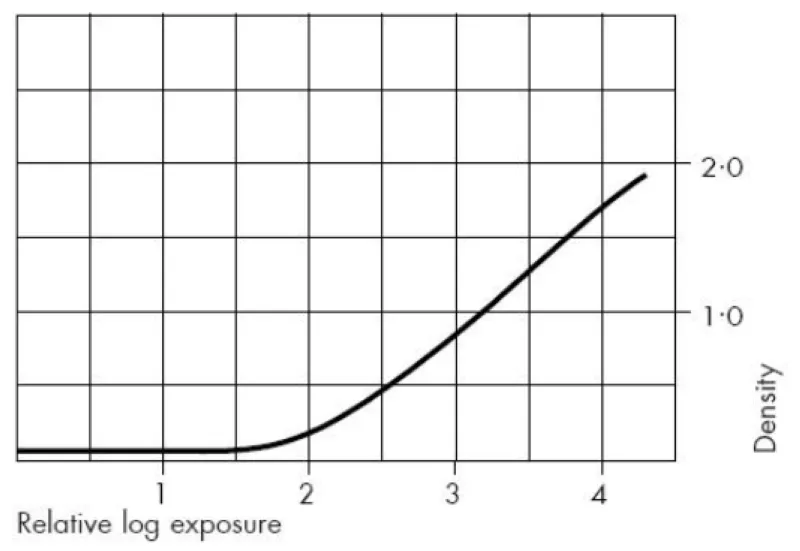
Schwarzschild effect
Photo film can be described as linear in terms of exposure in certain areas. We all know this when we convert the exposure from f/8 at 1/500s to f/11 at 1/250s. This linearity helps us to shift the lighting conditions in our heads as we wish.
The Schwarzschild effect, on the other hand, describes the fact that with long exposure times this shifting no longer works linearly, but increasingly exponentially (exceptions prove the rule).
Ilford recommends adjusting the exposure time from 1/2s for the Pan F+ and publishes the following graph:
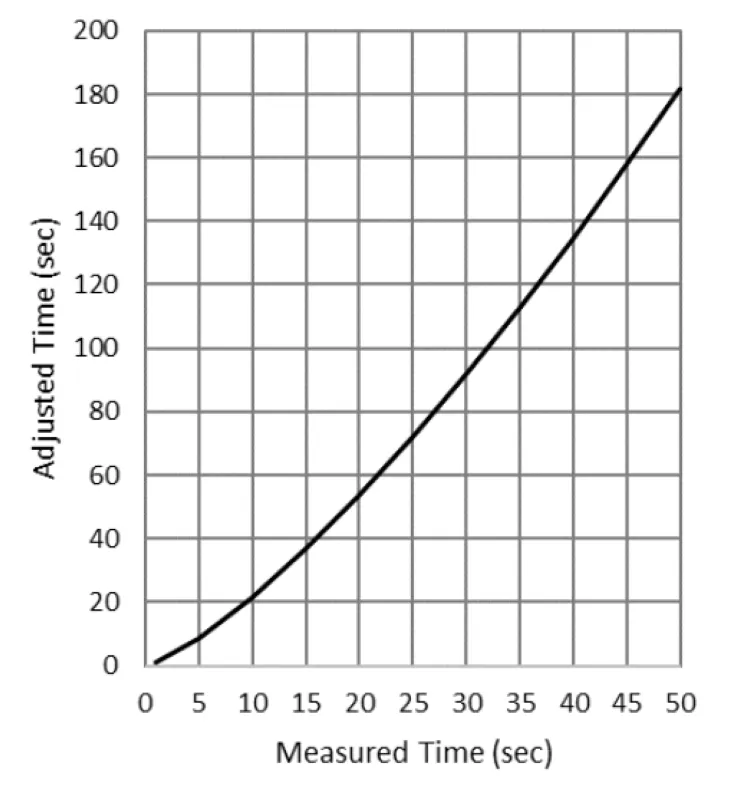
Spectral analysis
Ilford publishes the following spectrum for the Pan F+:

Recommended developers for the Pan F+
Ilford provides recommended development times for all their own developers for films with an ISO of 25 and 50. For Microphen, the recommended times are for films with ISO 50 and 64.
There are also recommended development times for external companies that produce films with an ISO of 50.
In my experience, both films work well. When using Rodinal, I typically develop at 16°C to minimize the grain size.
My laundry list is as follows:
- Rodinal 1+25, 9:35 min 16°C, 30:30:1 (30 seconds continuous tilt at the start, then every 30 seconds 1 tilt)
- Xtol 1+1, 7:45 min, 20°C, 30:30:3 (30 seconds continuous tilt at the start, then 3 tilts every 30 seconds)
- Both result in good scannable negatives. If you enlarge analog, you may have to adjust the times or tilting rhythm, since my negatives tend to be on the low-contrast side so that the scanner can read them more easily.
- Other developer/time combinations can of course be found on the Massive Dev Chart (PanF+)
Scannability
Pan F+ film is very easy to scan as it lies flat and does not curl. The negative densities also do not cause any issues with my scanner, assuming the film has been developed correctly.
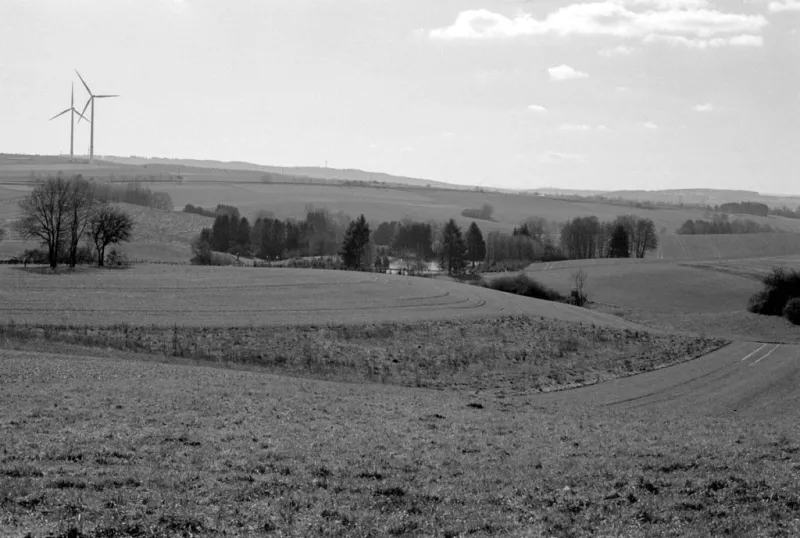
Recommendation and final thoughts
Can I recommend using Pan F+ film? Absolutely! The film has a sensitivity of 50 ASA, so a prerequisite is having sufficient light. However, when there is enough light, the Pan F+ will reward you with detailed and clean results that have excellent tonality and are easy to scan.
Disadvantage: Obviously the 50 ASA, depending on the lens, the exposure can get tight in the shade or in the forest, even on sunny days.
If you haven’t tried this film yet, I recommend giving it a chance. It may not be an everyday film, but whenever the opportunity arises for me to use it, I am always happy to take advantage of it.
Video: Medium format and 35mm
An interesting review of Danilo Allen on youtube.





